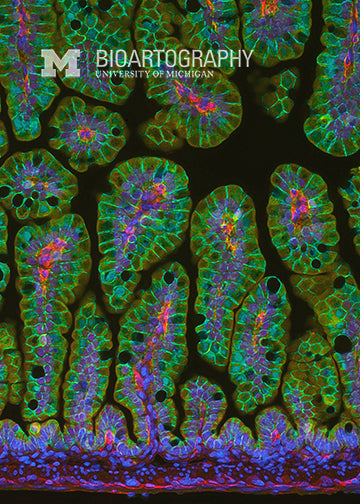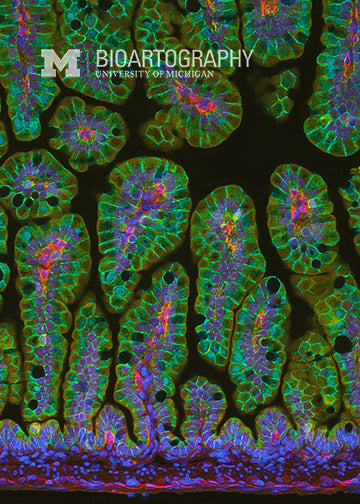

Andrew Freddo, Graduate Student (Gumucio Laboratory), Department of Cell and Developmental Biology, University of Michigan Medical School
To accomplish its major function (nutrient absorption), the surface the intestine requires a very large surface area (up to 2,000 square meters in an adult human). Therefore, its surface is highly folded into finger-like projections known as villi. The process of patterning and forming these villi occurs very early on in embryonic development. Both the number and location of these villi are determined by an
array of cell “clusters” (marked in red). These clusters use soluble signaling molecules that “talk” to the overlying sheet of cells (outlined in green), urging them to change shape; these shape changes likely cause the sheet to buckle, forming the villi.
